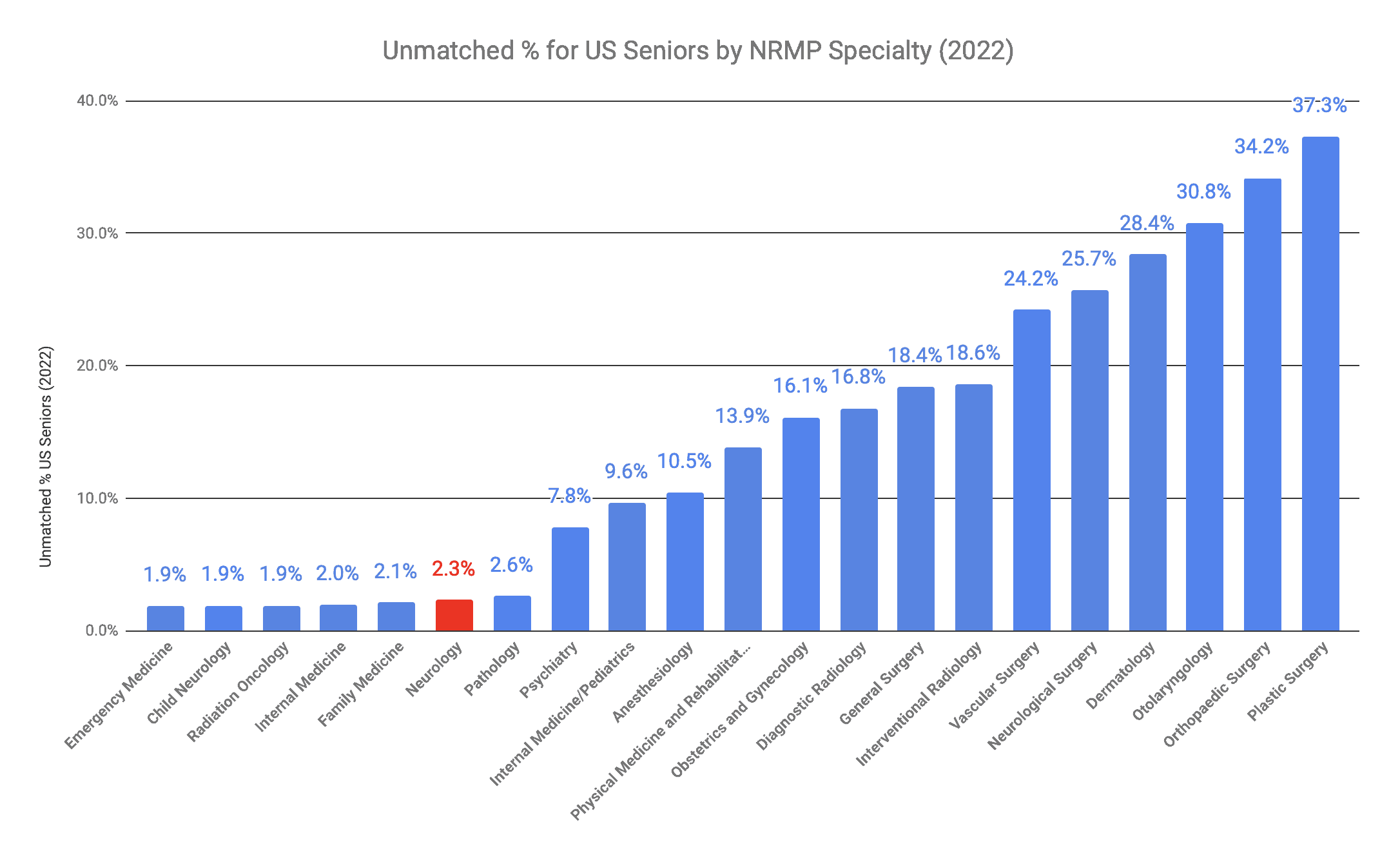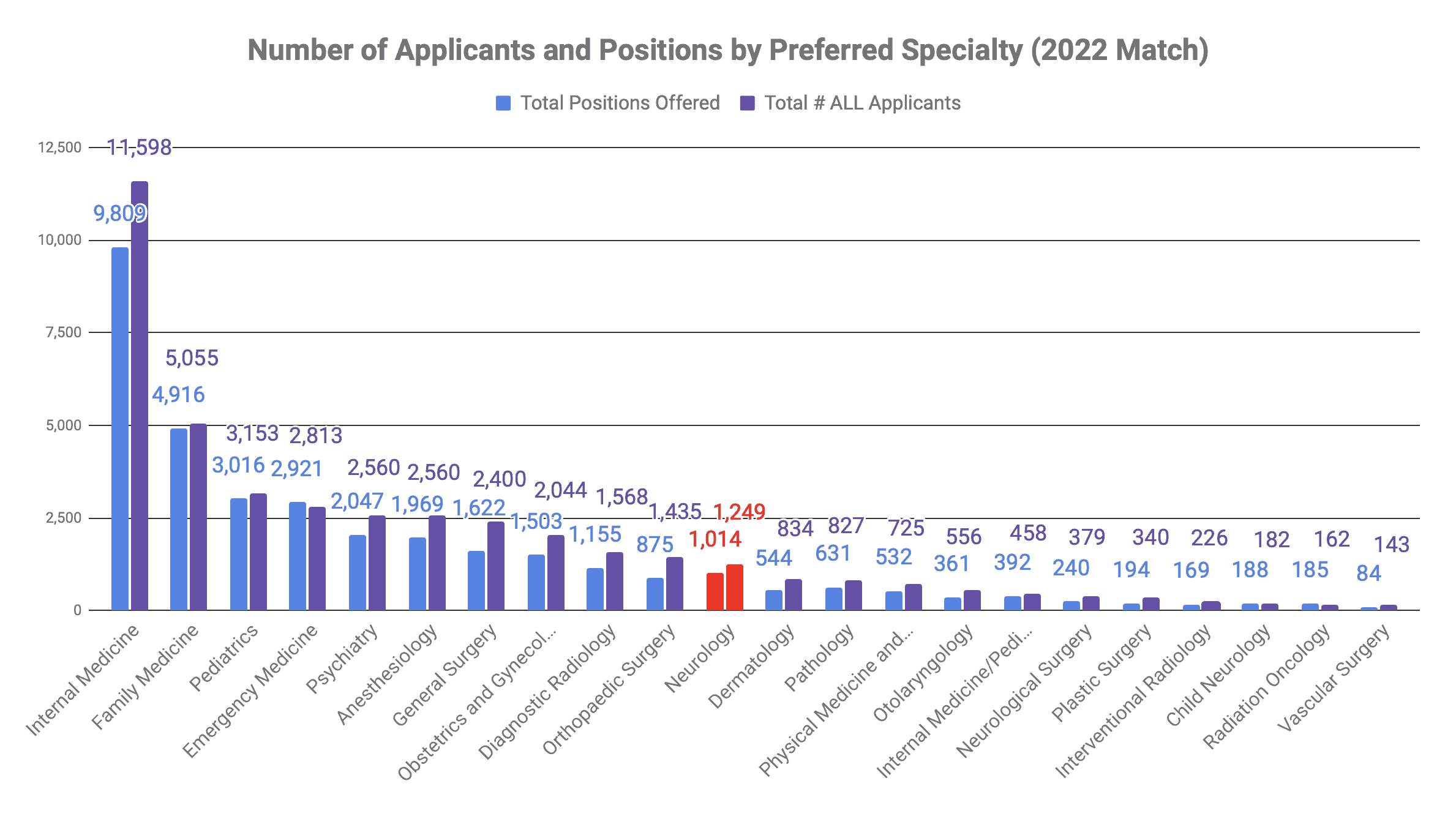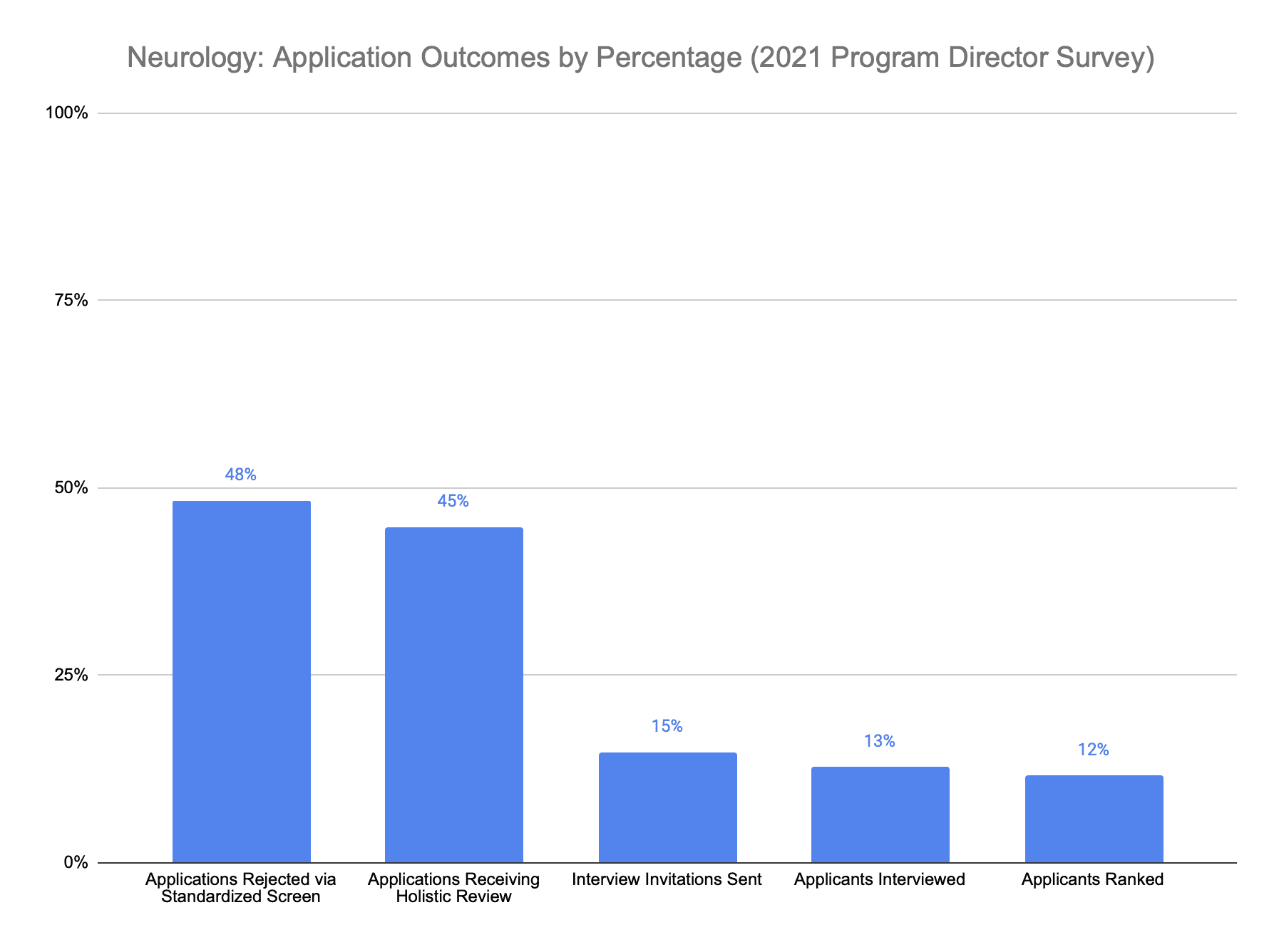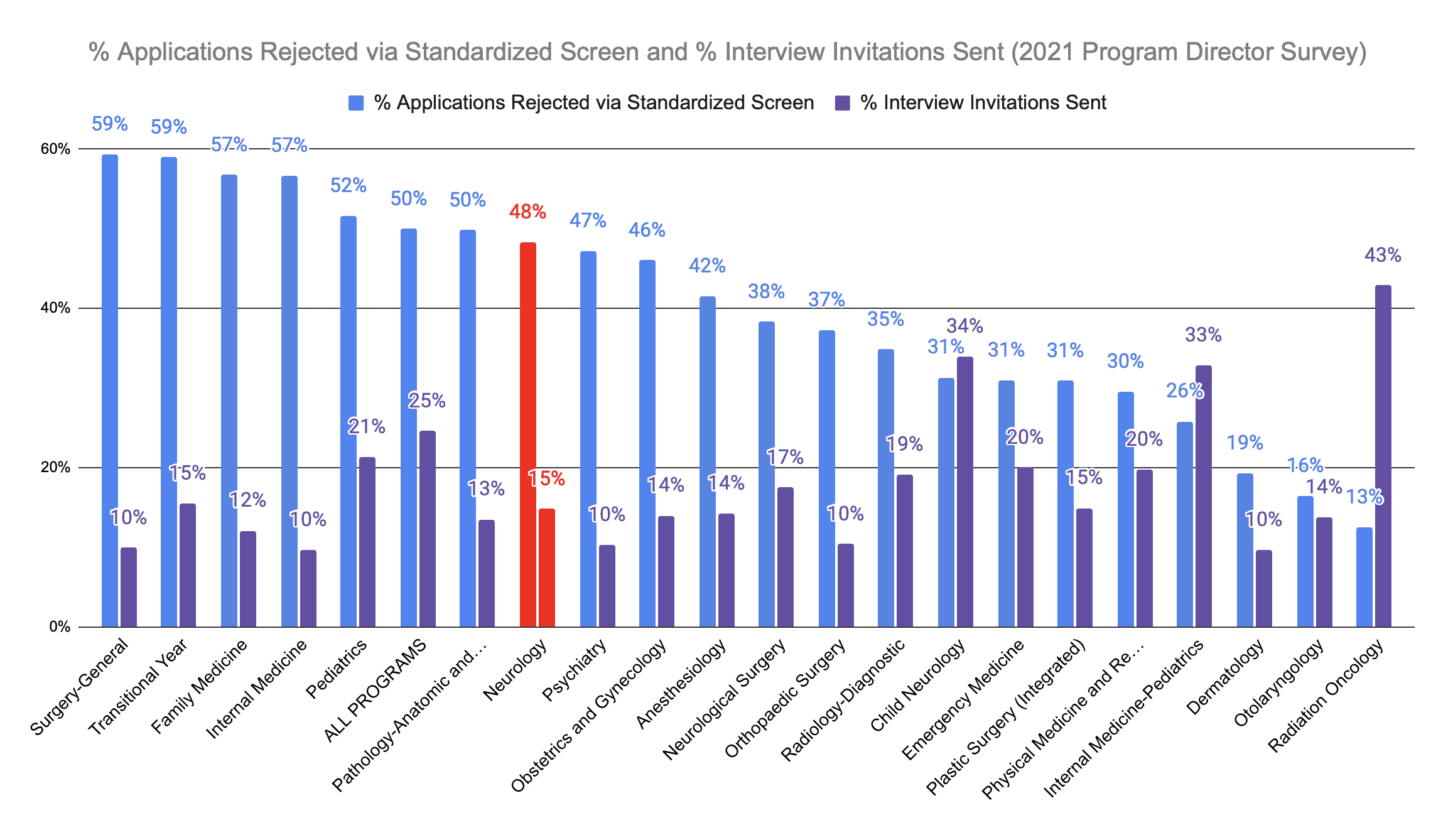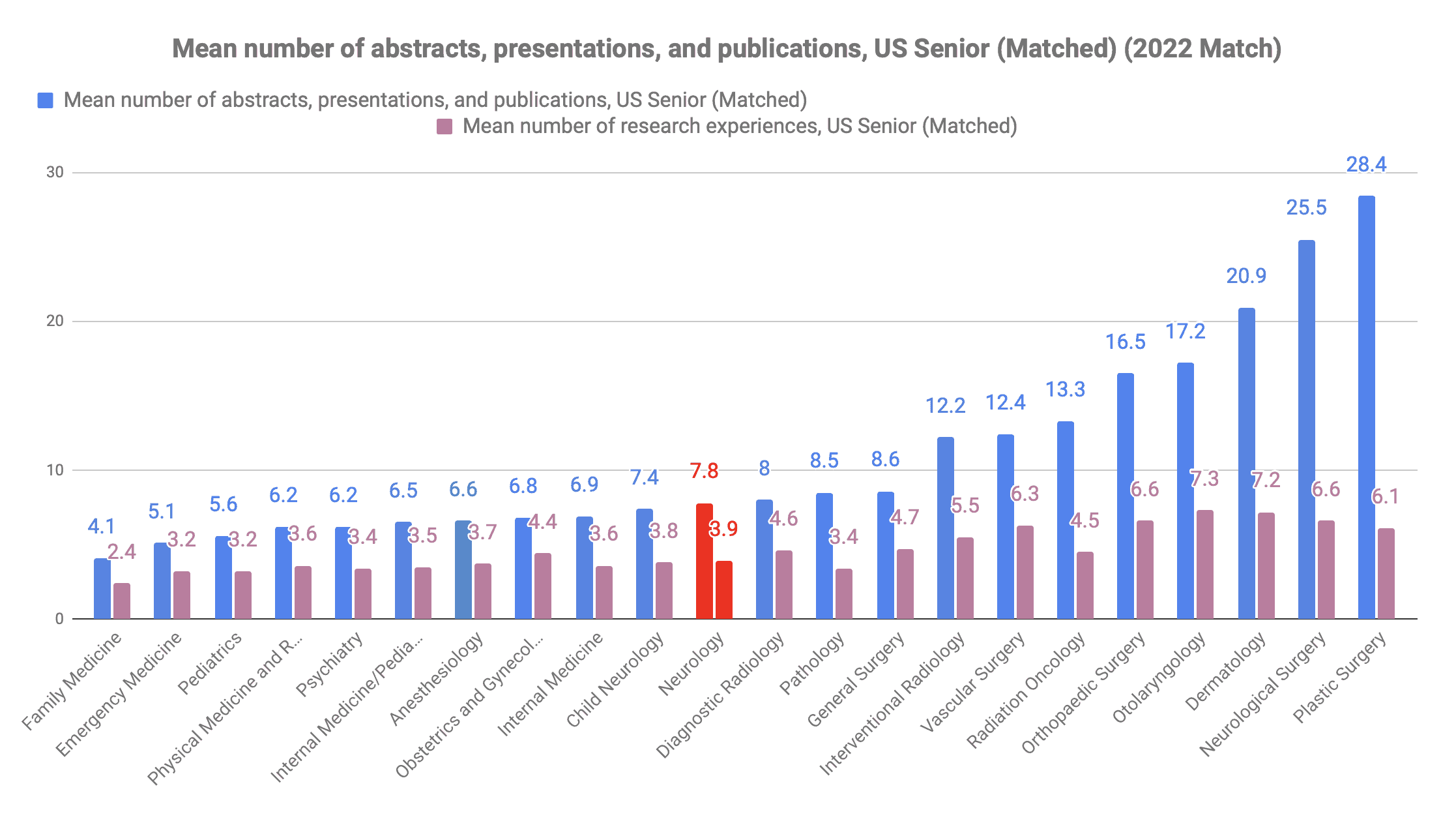
Is neurology competitive? How significant are the USMLEs, research, med school reputation, and AOA membership for matching into neurology? Is neurology IMG-friendly? And what is the DO match rate for neurology programs?
In this article, you’ll learn about neurology’s competitiveness in 2022. You’ll know what to focus on – and what not to – to maximize your chances of matching into this desirable specialty.
Summary:
- Neurology Overall Competitiveness: Moderate
- Research Importance: Low
- USMLE Importance: Moderate
- Importance of Attending Top 40 Med School: Low
- Importance of Class Rank / Obtaining AOA (Med School Honors): Low
Table of Contents
Is Neurology Competitive in 2022?
One way to assess the competitiveness of a specialty is to look at the match rate – the % of people who apply and end up matching into their preferred specialty.
Among US seniors, the unmatched percentage was 2.3%, making it less competitive than most US residency programs. The match rate for neurology is considerably better than the most competitive specialties like plastic surgery, orthopedic surgery, or otolaryngology. However, neurology is considerably more competitive than pediatrics, emergency medicine, child neurology, or even radiation oncology in the 2022 match.
For more on the most competitive US specialties, see this article.
Neurology Match Rate
What is the Neurology match rate for US seniors, DO seniors, and IMGs?
The “match rate” is the % of people who applied to a particular specialty as their preferred specialty who successfully matched into the specialty.
- US Senior Neurology Match Rate (2022 Match): 97.7%
- DO Senior Neurology Match Rate (2022 Match): 92%
- US IMG Neurology Match Rate (2022 Match): 54%
- Non-US IMG Neurology Match Rate (2022 Match): 50%
See below for more on matching into Neurology as a DO or IMG.
Neurology Match Statistics 2022
In 2022, there were 1,014 neurology positions available in the NRMP match. A total of 1,249 applicants listed it as their preferred specialty.
In the 2022 Match, neurology ranked #10 for most total positions offered, behind:
- Internal medicine: 9,809 positions
- Family medicine: 4,916 positions
- Pediatrics: 3,016 positions
- Emergency medicine: 2,921 positions
- Psychiatry: 2,047 positions
- Anesthesiology 1,969 positions
- General surgery: 1,622 positions
- Obstetrics and gynecology: 1,503 positions
- Diagnostic radiology: 1,155
How Many Applicants Receive Interviews in Neurology?
According to the 2021 Program Director survey, each neurology program received 636 applications on average. Other data include:
- Applications received (Neurology): 636
- Applications rejected based on standardized screen (Neurology): 307
- Applications receiving holistic review (Neurology): 285
- Interview invitations sent (Neurology): 94
- Applicants interviewed (Neurology): 81
- Applicants ranked (Neurology): 74
Looking at the percentages, we can see that for the 2021 Match:
- 48% of Neurology applications were rejected via standardized screen,
- Only 45% of Neurology applications received a holistic review,
- 15% of Neurology applications received an interview invitation, and
- 12% of all Neurology applicants were ranked to match
Neurology is Moderately Reliant on Screens
Neurology relies on standardized screens to weed out applicants. In the 2021 Program Director Survey, neurology PDs respondents reported that 48% of applications were rejected via standardized screen. In comparison with other residency programs, this program is slightly above average.
USMLE Scores for Neurology
Step 1 scores for neurology for matched US seniors reflect its moderate competitiveness.
Neurology Step 1 Scores (Matched Applicants in 2022 Match):
- 25%ile: 222
- Median: 232
- 75%ile: 245
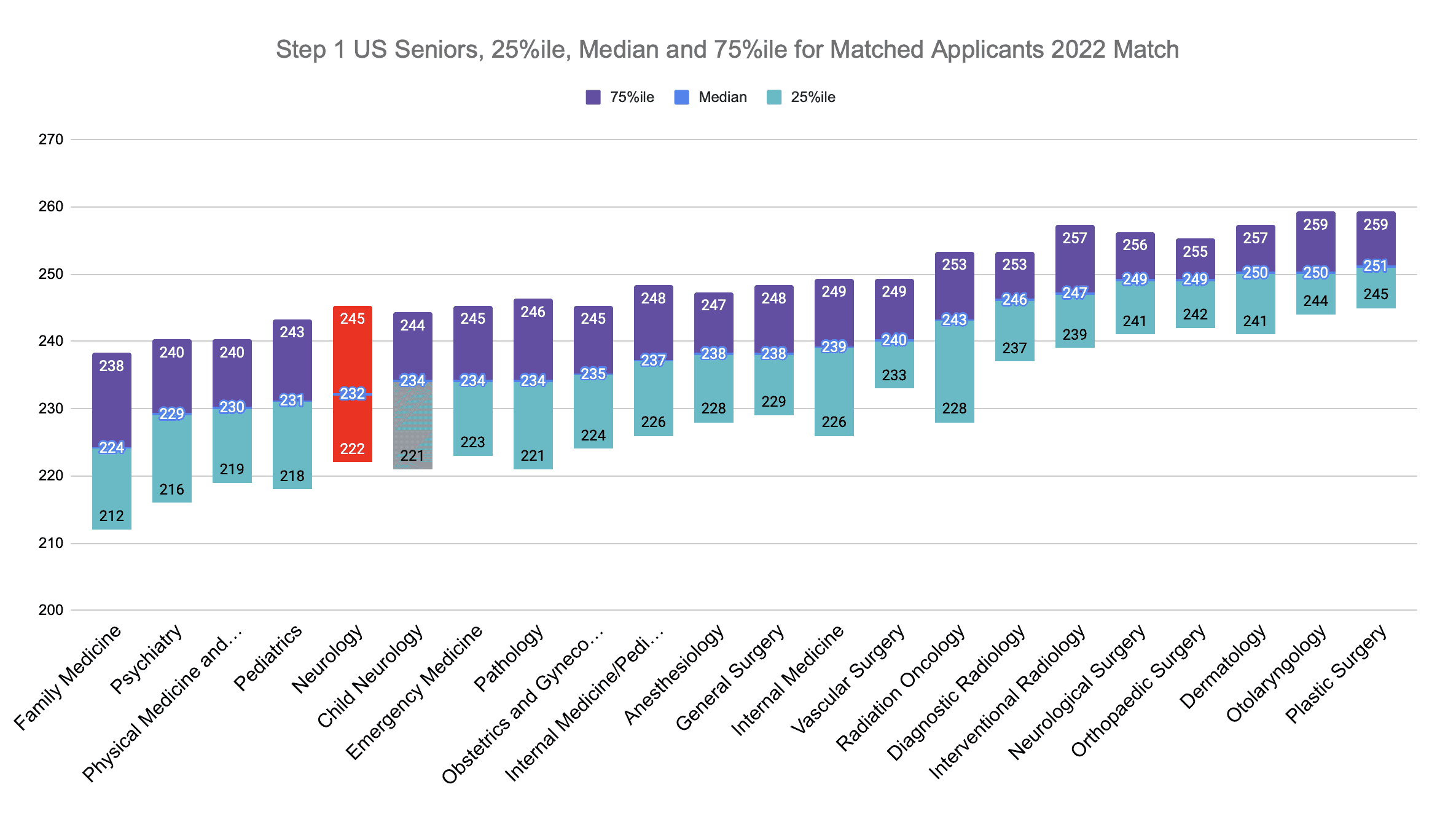
Step 1 Neurology Scores Are Middle of the Road (2022 Match)
Similarly, Step 2 CK scores for neurology for matched US seniors reflect its moderate competitiveness.
Neurology Step 2 CK Scores (Matched Applicants in 2022 Match):
- 25%ile: 236
- Median: 246
- 75%ile: 256
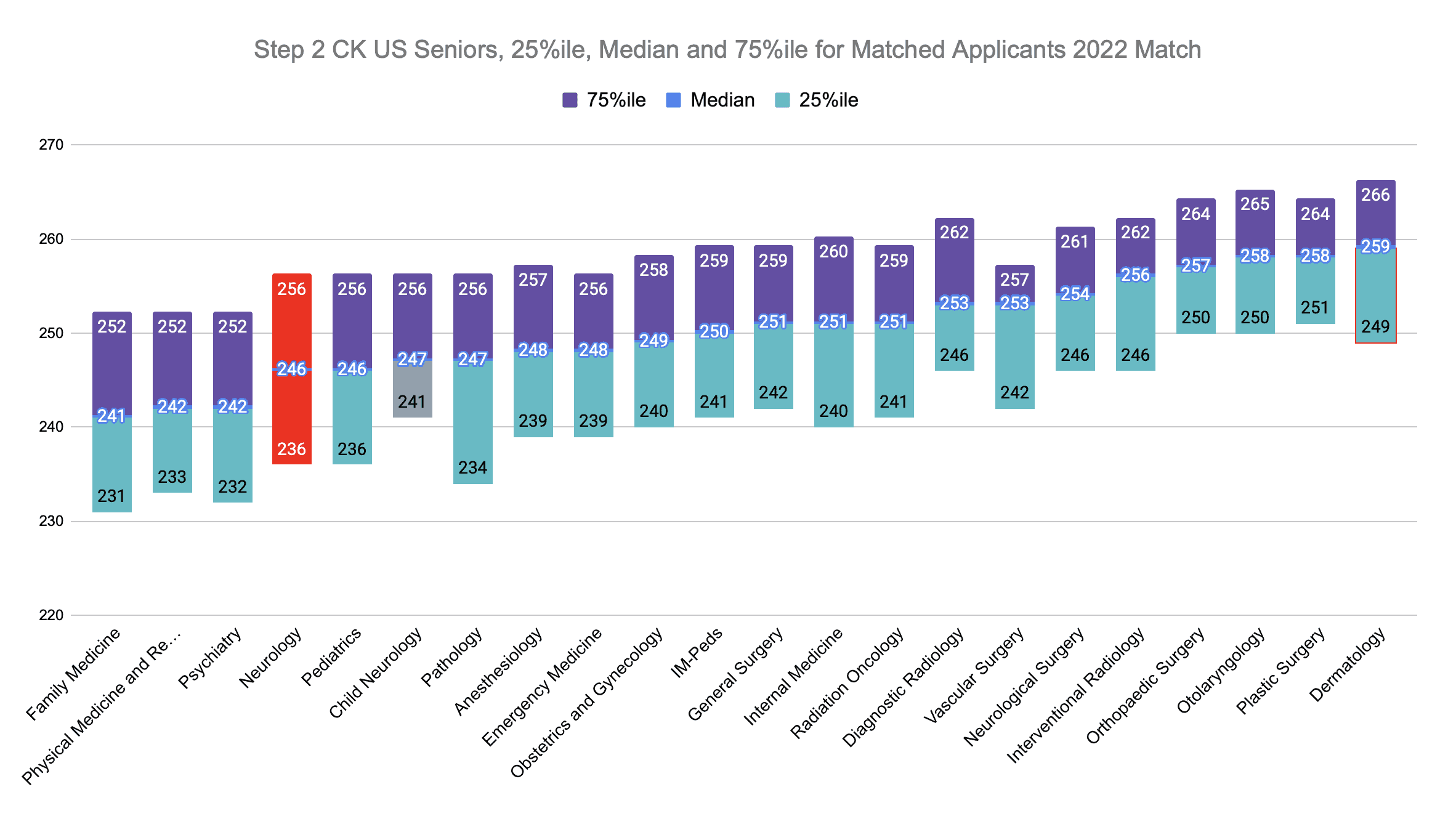
Step 2 CK Neurology Scores Are Middle of the Road (2022 Match)
See this article for more on USMLE Step 1 and Step 2 CK percentiles for each specialty and the overall percentiles.
Matching into Neurology as a DO
Matching into Neurology as a DO is moderately competitive, with a 92% match rate and 15% of spots filled by DO Seniors in the 2022 Match. In 2022, 163 DO seniors applied for Neurology; 150 matched.
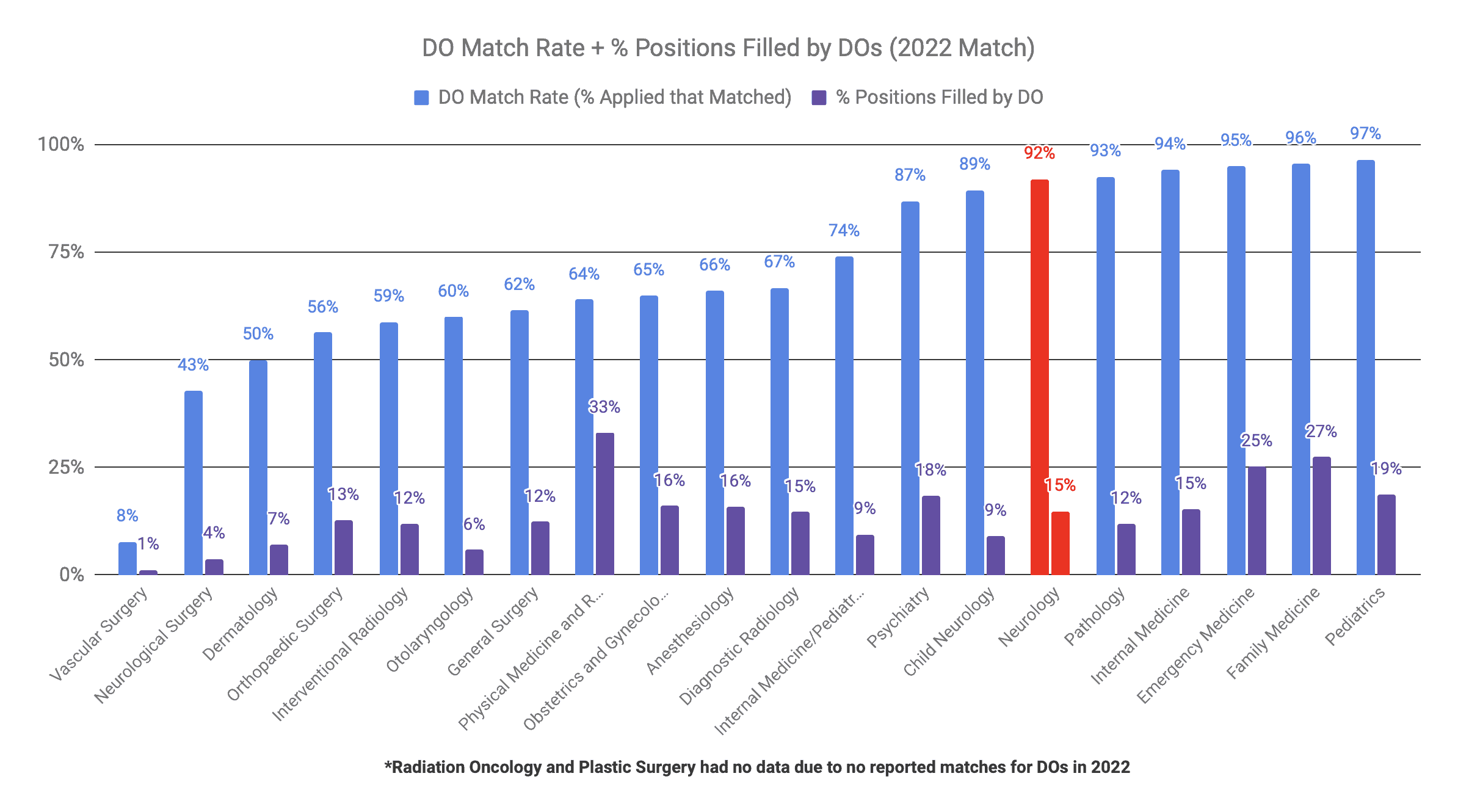
Neurology is Moderately DO-Friendly (2022 Match)
For more on the most DO-friendly specialties, see this article.
Is Neurology IMG Friendly?
Neurology is moderately IMG-friendly, with an overall 51% match rate and 25% of spots filled by IMGs in the 2022 Match. In 2022, 122 US IMGs and 370 non-US IMGs applied to Neurology; 66 US IMGs and 185 non-US IMGs matched.
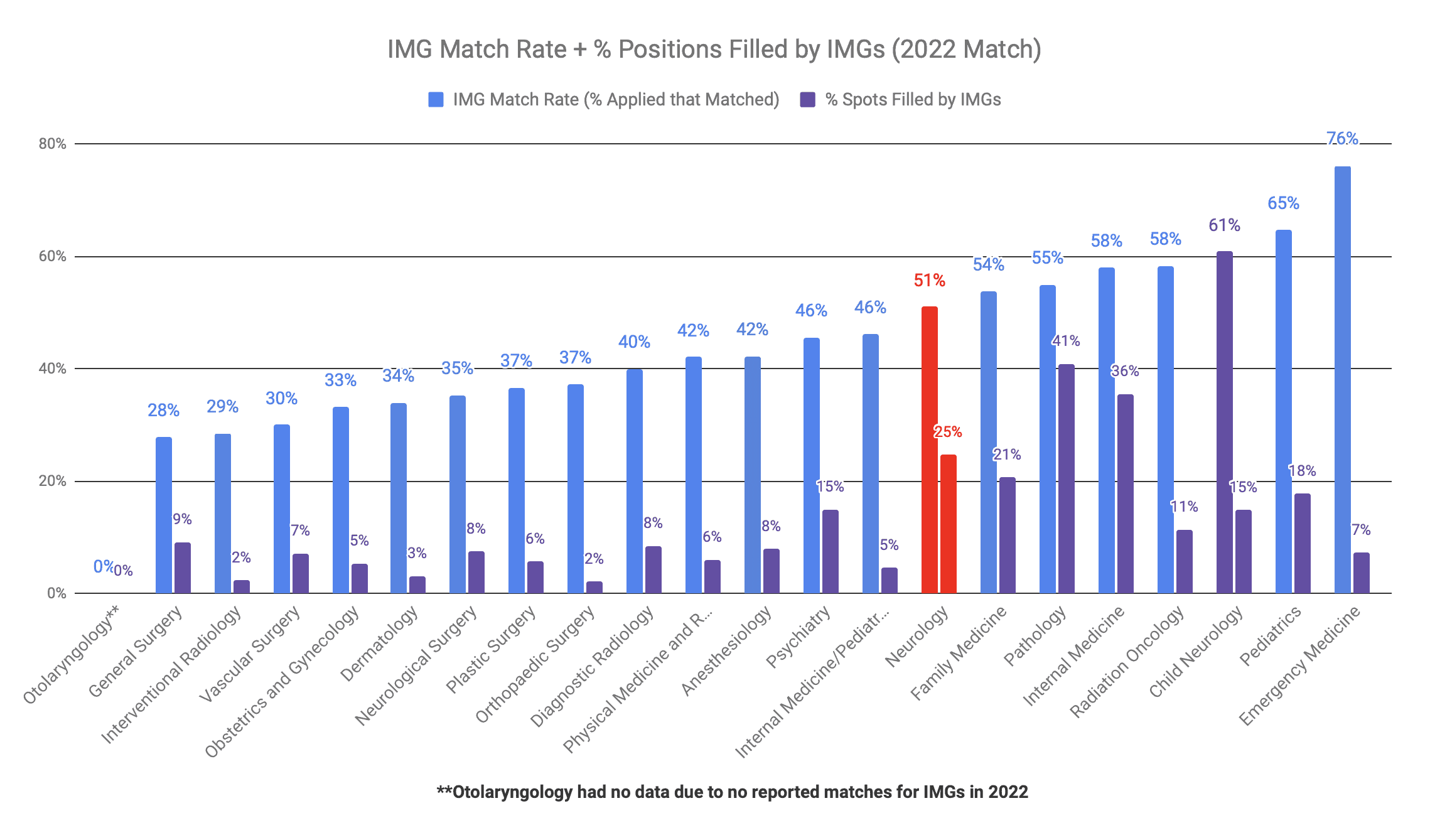
Neurology is Moderately IMG-Friendly (2022 Match)
We can see that US IMGs had a slightly higher match rate (54%) than non-US IMGs (50%) in neurology.
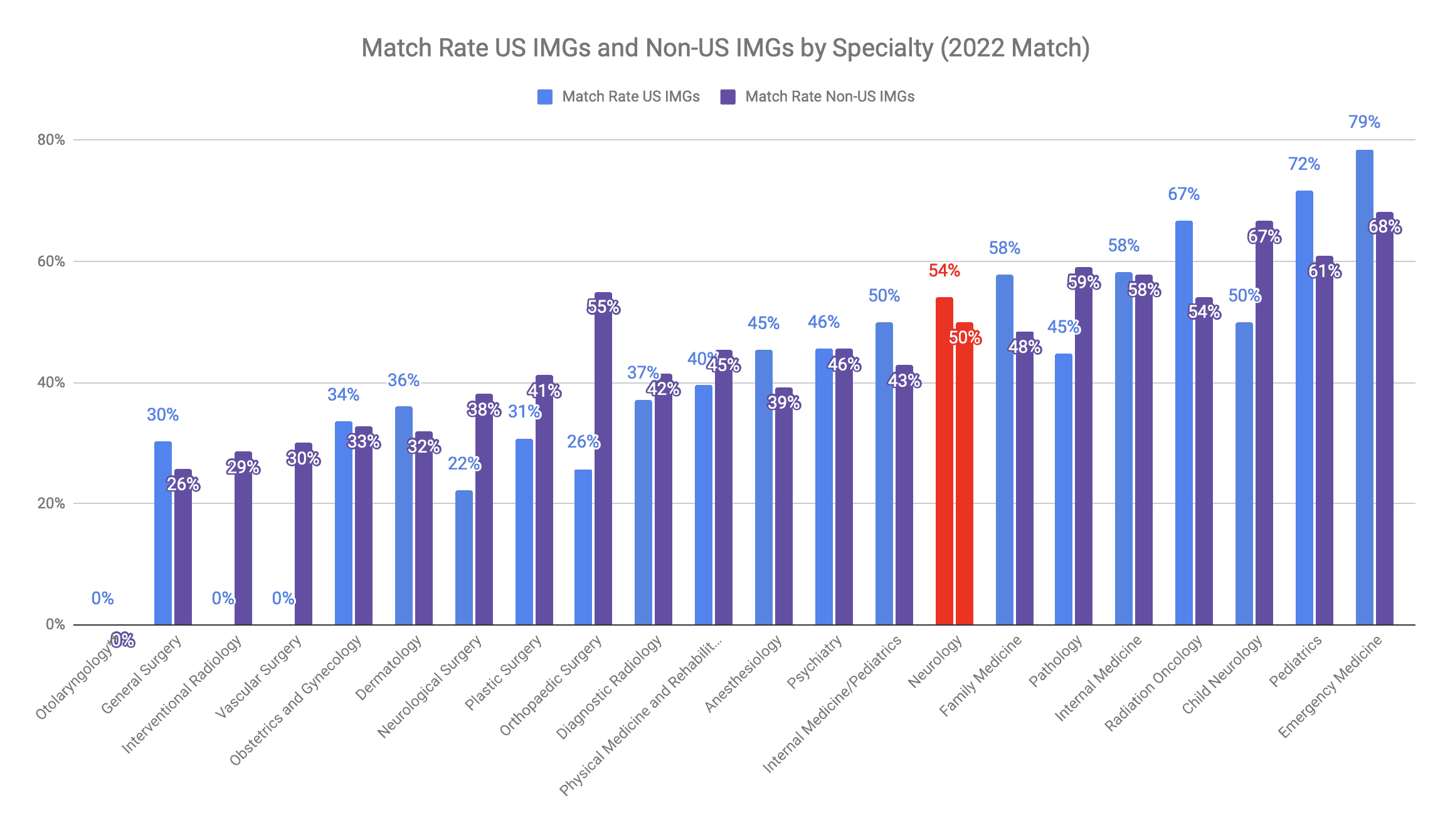
For Neurology, US IMGs had a slightly higher match rate (54%) than non-US IMGs (50%) in the 2022 Match
For more on the most IMG-friendly specialties, see this article.
Neurology-Friendly IMG Residency Programs
For a list of the most IMG-friendly neurology programs, see this article.
How Much Do Neurologists Make per Year? Per Hour?
Neurologists have an average annual salary of $301,000. This can vary dramatically based on practice setting, specialty training, and experience level.
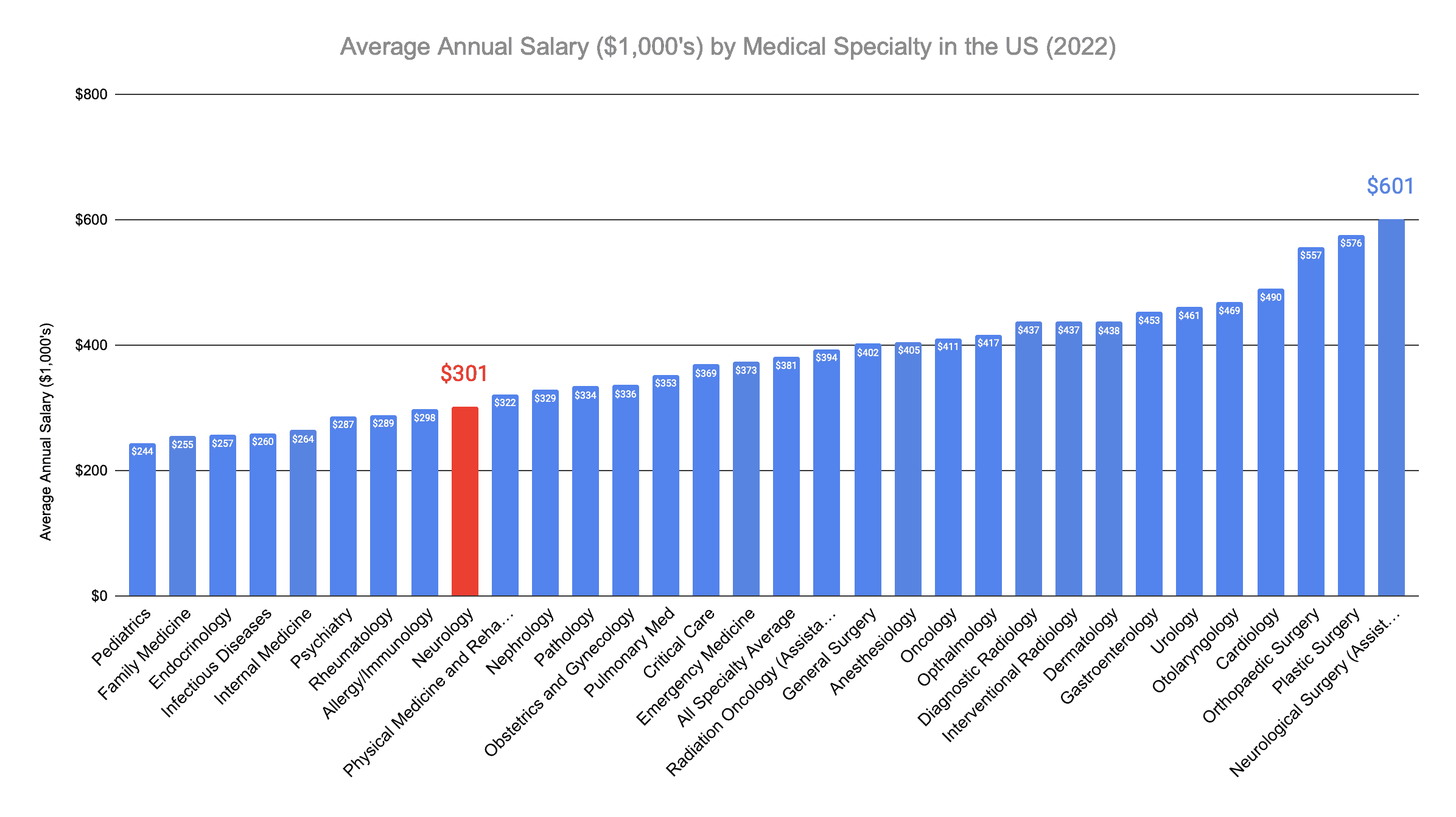
Neurologists make $301,000 per year on average
However, annual salaries can be misleading. Some specialties work much more than others. Considering the hours worked per year for neurologists, we get an estimated hourly salary of $129/hr.
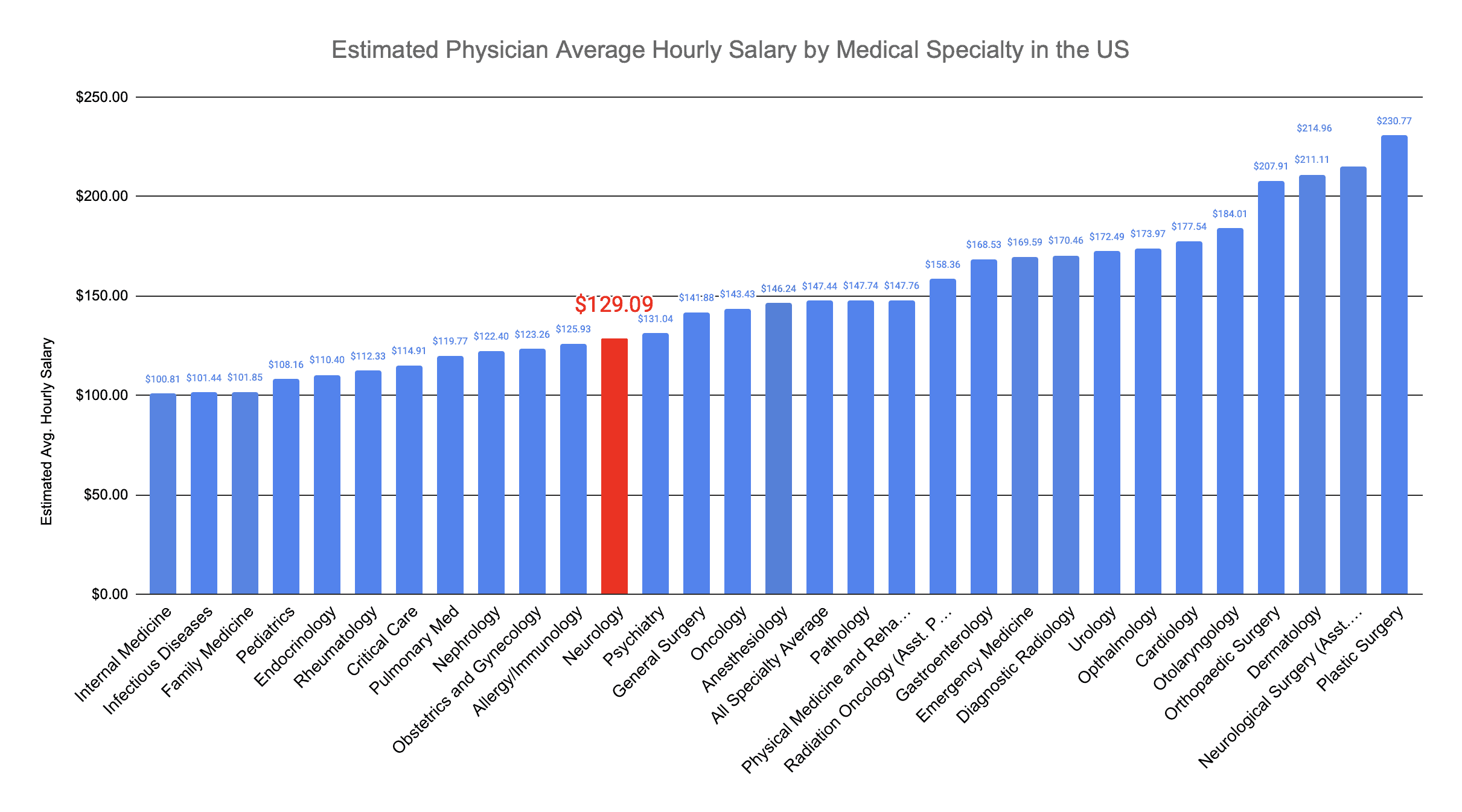
Neurologists make roughly $129/hr on average when taking in hours worked per year
See this article for more on physicians annual salaries and estimated hourly wages by specialty.
How Important is AOA for Neurology?
AOA – Alpha Omega Alpha – is the med school honors society. Each school may elect up to 20% of the graduating class of students.
Having AOA membership confers a greater advantage to matching into some specialties more than others. Often this AOA advantage is greatest for the most competitive specialties.
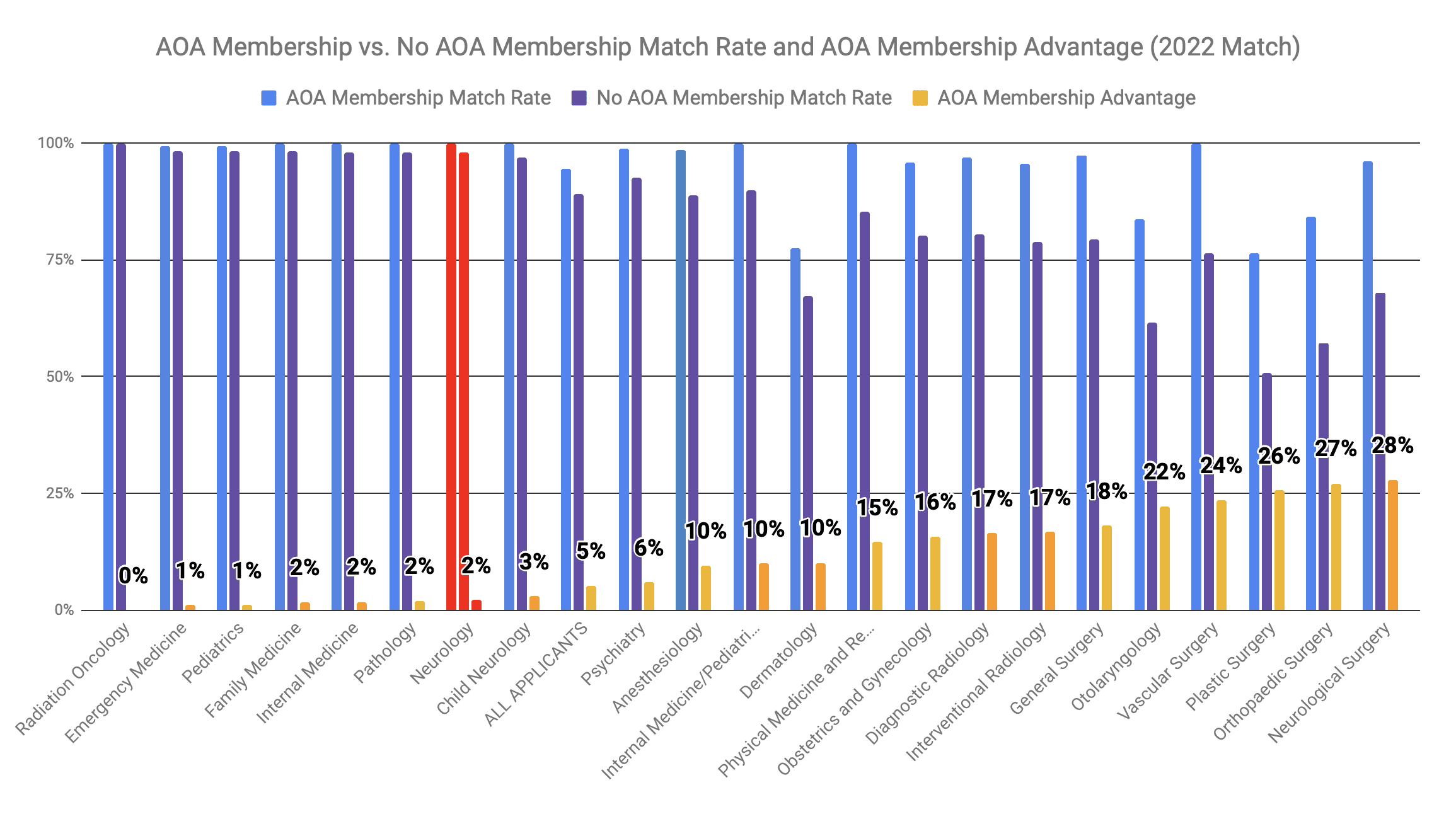
AOA membership correlated with a 2% match rate advantage for Neurology in the 2022 Match
In the 2022 Match, the match rate for US seniors with AOA membership was 2% greater than that of US seniors without AOA membership. AOA membership provided a moderate advantage to matching into neurology residency.
Some schools do not have AOA chapters. Even in those schools, many of them rank students against each other. Regardless of AOA status, class rank is important in successfully matching into neurology.
For more on AOA medical schools and the importance of class rank for matching, see this article.
How Many Publications for Neurology Residency in 2022
Research is an important characteristic for matching into many specialties, particularly the most competitive. So, how many publications do you need to match into a neurology residency?
In 2022, the mean number of abstracts, presentations, and publications for US seniors who matched into neurology was 7.8. The mean number of research experiences was 3.9.
Do I Need an MD-PhD to Match Into Neurology?
You may wonder how much an MD-PhD helps with matching into neurology. It appears that having a PhD correlates with a modest advantage of 2% when applying into neurology. Specifically, the match rate for those with a PhD is 2% higher than for those without one when applying into neurology.
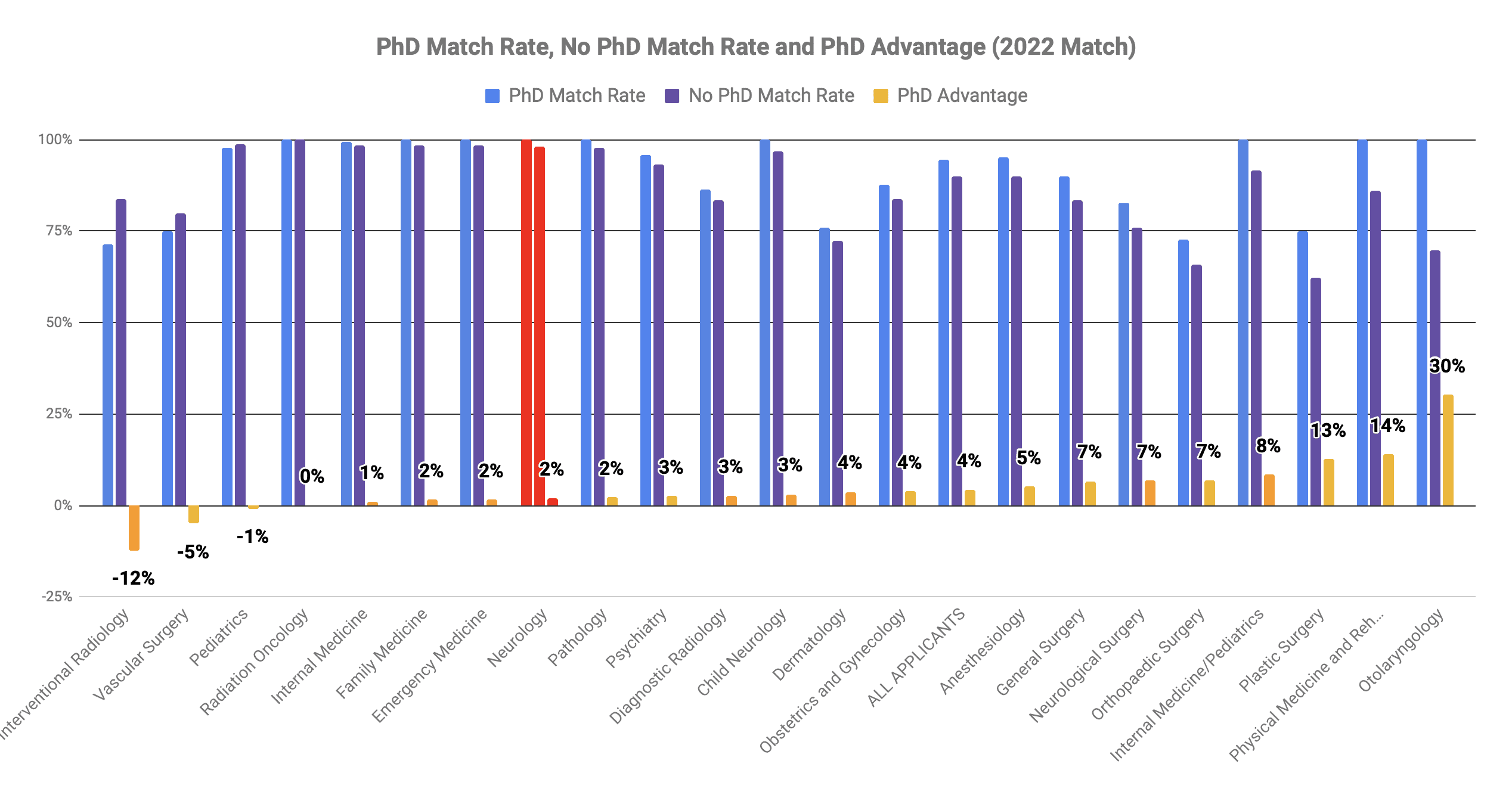
Having a PhD correlated with a 2% match rate advantage for Neurology in the 2022 Match
Note that those with PhDs are relatively rare among neurology residents. In fact, only 2% of matched applicants into neurology had a PhD in 2022.
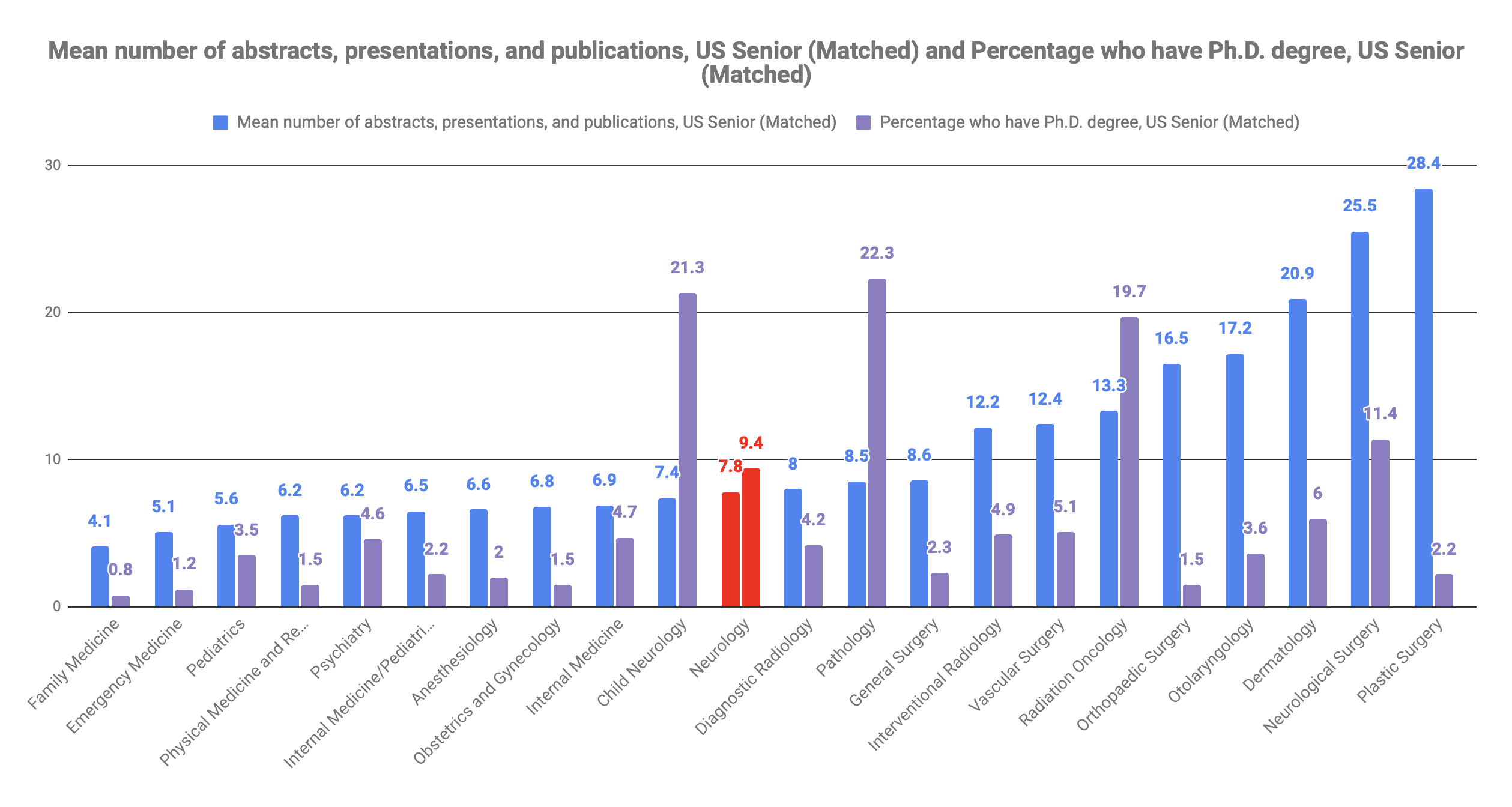
9.4% of matched applicants to Neurology had an MD-PhD in 2022
Should You Attend a Top Medical School to Match Into Neurology?
Does attending a top medical school help with matching into Neurology? According to the program director survey results above, 31.0% of Neurology PDs consider medical school reputation when considering whom to interview. The mean importance score was 4.1.
Similarly, we can look at the advantage to attending a school in the top 40 by NIH funding. In 2022, there was a -1% advantage in match rate to those attending a school in the top 40 for NIH funding vs. those who did not.
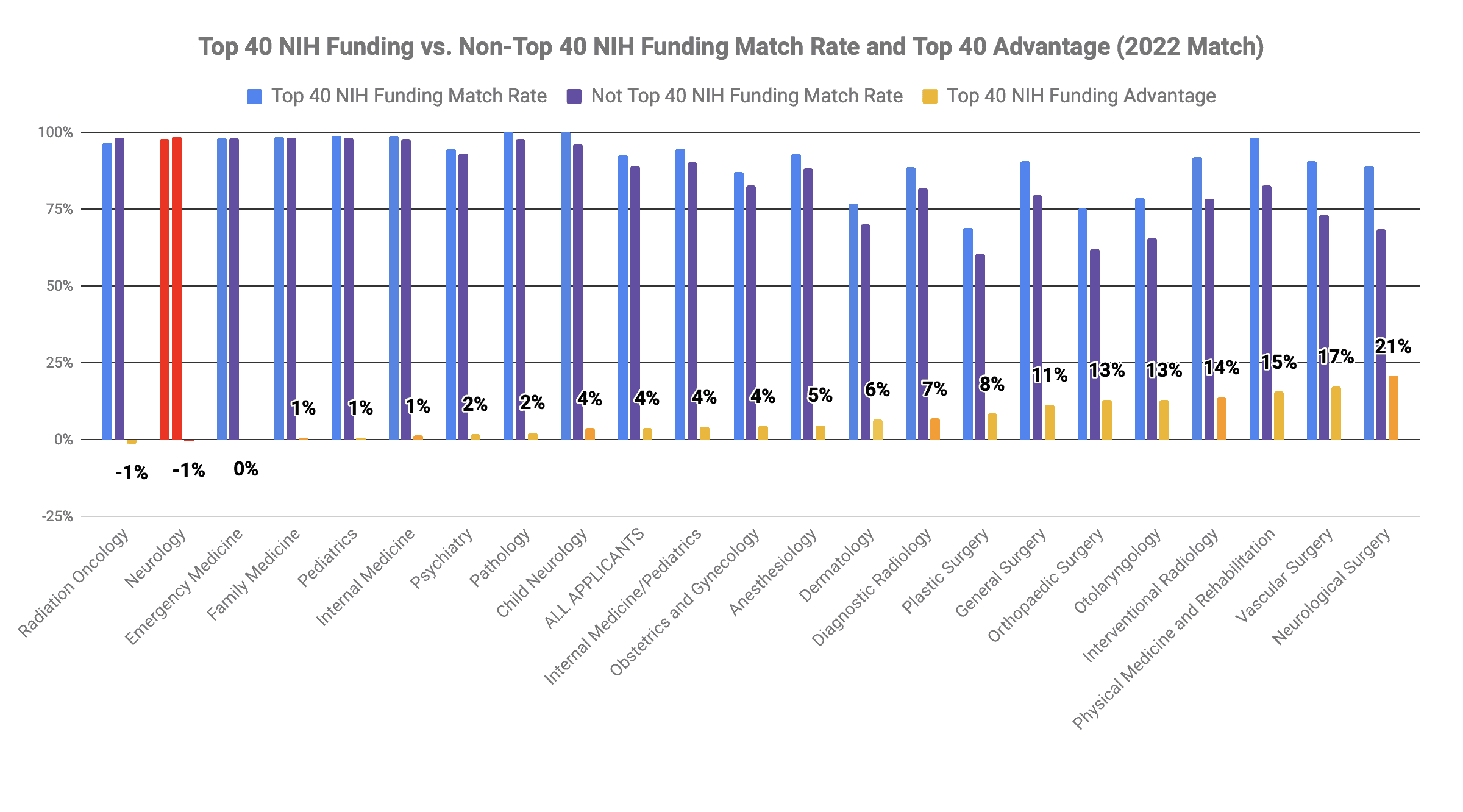
Graduating from a medical school ranked in the top 40 by NIH funding correlated with a -1% match rate advantage for Neurology in the 2022 Match
Does an MPH or MBA Help Match Into Neurology?
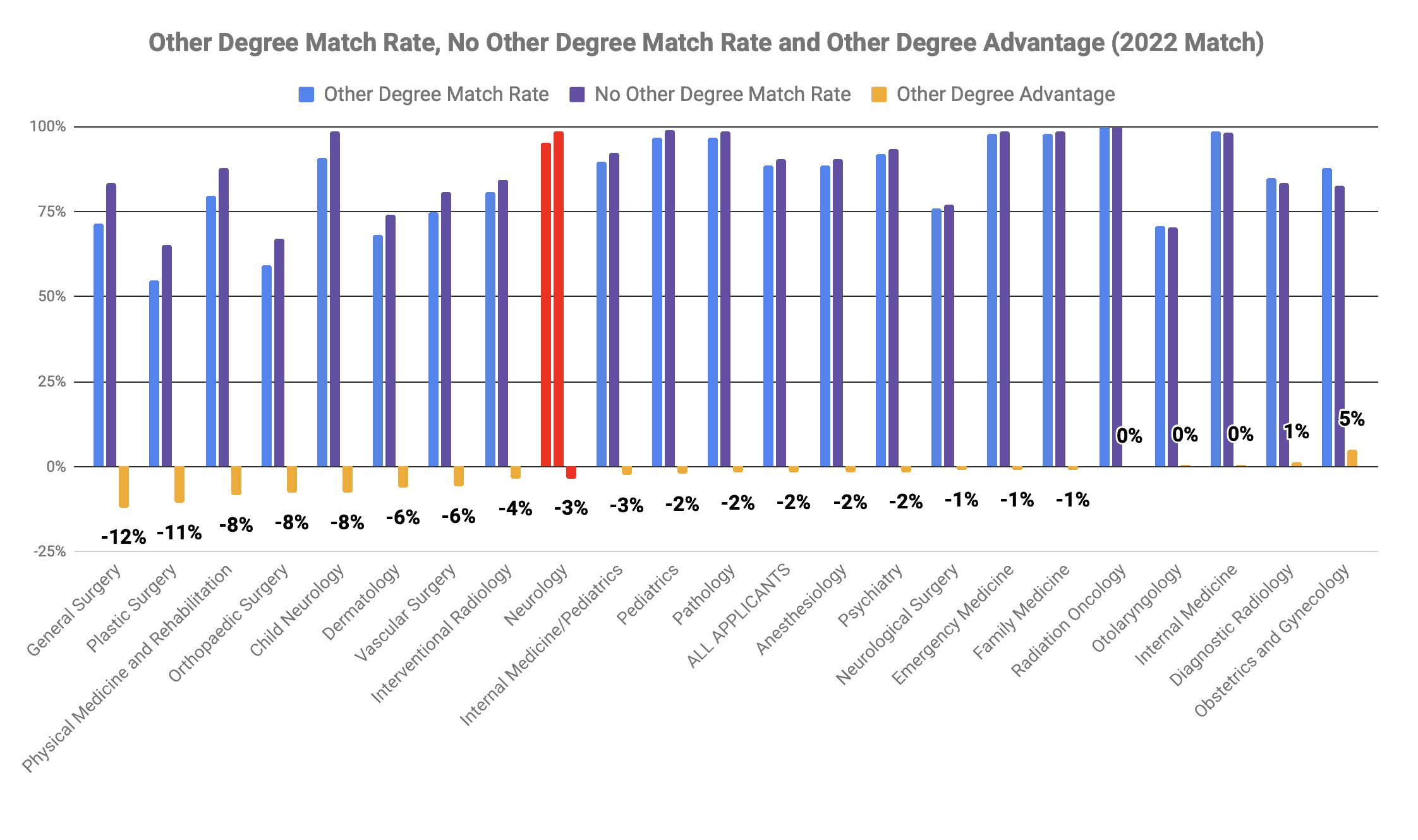
Having another degree like an MBA or MPH correlated with a -3% match rate disadvantage for neurology in the 2022 Match
What Are the Best Neurology Programs?
While neurology may be moderately competitive, the most desirable programs will always be extremely difficult to enter. So, which are the best neurology residency programs?
Opinions will vary. However, some of the most desirable neurology residency programs would include:
- NYU Langone Hospitals
- UCSF Health-UCSF Medical Center
- New York-Presbyterian Hospital-Columbia Cornell
- Rush University Medical Centre
- Johns Hopkins University
- Mayo Clinic
Concluding Thoughts
So how competitive is neurology in 2022? Statistically, it is moderately so. There is less competition in this specialty than in most other specialties, and it is moderately friendly to IMGs. In order to match, you do not need to do extensive research or have extra credentials, such as membership in the AOA or an Ivy League education. A different degree correlated with a -3% in matching into Neurology.
Neurology is still a highly competitive field, especially for the most desirable programs. Since neurology relies heavily on standardized screenings to weed out applicants, USMLE scores – and particularly Step 2 CK – will be emphasized moving forward.
Looking for a Neurology Residency Advisor?
Looking for a neurology residency advisor? Want help writing your personal statement? Need effective strategies for interviewing? Do you have things on your application – e.g., low USMLE scores, failed USMLEs, no research, IMG status, or others – you need help overcoming?
Be sure to check out our Residency Advisor service.

